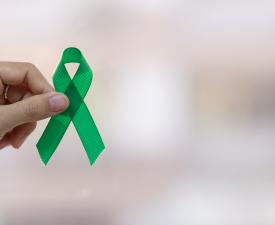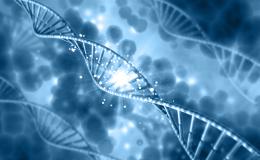10 Facts to Know About Gallbladder Cancer
February 18, 2021
February is Gallbladder Cancer Awareness Month.
Gallbladder cancer is rare, and the location of the gallbladder, tucked below the liver, can make the disease difficult to detect.

The goal of gallbladder cancer awareness campaigns is to teach people the signs and symptoms of the disease to facilitate earlier detection and treatment. The color for gallbladder cancer awareness is Kelly green.
Approximately 4,800 people in the United States will be diagnosed with gallbladder cancer this year.1
The disease is more common in men than it is in women. Common risk factors for gallbladder cancer include: a personal or family history of gallstones, chronic infection and/or inflammation of the gallbladder, obesity, poor diet, a family history of gallbladder cancer, exposure to cancer-causing chemicals, female sex, advanced age, and having American Indian, Alaska Native or black ethnicity.
There are few, if any, signs and symptoms of gallbladder cancer in the early stages of the disease.
Signs and symptoms of advanced stage gallbladder cancer can include: pain in the upper-right abdomen, unintentional weight loss, abdominal bloating, and/or jaundice (yellowing of the skin and whites of eyes).
Only about 1 out of every 5 gallbladder cancers is found at an early stage.2
Most gallbladder cancers that are detected at an early stage are discovered after the gallbladder has been removed for gallstones. There are currently no screening tests for the cancer.
The 5-year survival rate for people diagnosed with gallbladder cancer is 19%.3
The 5-year survival rate calculates what percentage of people are alive 5 years after the cancer was detected. This rate changes depending on what stage the gallbladder cancer is diagnosed and treated. If the cancer is localized and has not spread beyond the gallbladder, the 5-year survival rate rises to 62%. If the cancer has spread to surrounding tissues or lymph nodes, the 5-year survival rate drops to 27%. Gallbladder cancers that migrate to distant parts of the body reduce the 5-year survival rate to only 2%.
Approximately 25% of gallbladder cancers are thought to be familial.4
An epidemiological study from Sweden found that offspring of a parent diagnosed with gallbladder cancer were 5 times more likely to develop the disease compared to the general population.5 No mutations, or changes, in any gene have been implicated in familial gallbladder cancers, whereas causative mutations have been identified in several hereditary cancer syndromes. A recent study, however, found that common gene mutations, or variants, near the genes ABCB4 and ABCB1 were significantly associated with gallbladder cancer.6
Surgery, radiation and chemotherapy are the standard treatments for localized gallbladder cancer.
Additional therapies are also being studied in clinical trials. Radiation sensitizers, including hyperthermia therapy and radiosensitizers, are used to increase the effectiveness of radiation therapy. Ivosidenib and Pemigatinib are targeted therapies used to kill cancer cells. Immunotherapies, such as PD-1 inhibitors, can also be used to modulate the patient’s immune response to cancer cells. Palliative therapies are used to relieve symptoms and suffering in patients with recurrent or metastatic gallbladder cancers or cancer that cannot be removed surgically.
Most gallbladder cancers are adenocarcinomas.
These cancers start in the glandular cells that line the gallbladder. The three types of gallbladder adenocarcinoma (in order of most to least prevalent) are nonpapillary, papillary, and mucinous. Papillary adenocarcinomas are less likely to spread to nearby tissues, giving patients with this type of gallbladder adenocarcinoma a better prognosis.7
Over one-third of gallbladder cancer patients who had their cancer surgically removed experienced a recurrence of the cancer.
The cancer recurred within two years of surgery for most patients. In some cases, the recurrence was local, but in other cases, the cancer recurred at only a distant site or locally and at a distant site. Recurrent gallbladder cancer most commonly spreads to the liver.8
Most gallbladder cancer survivors won’t experience digestive problems due to cholecystectomy (gallbladder removal).
The gallbladder serves to store bile, and the liver will continue to make bile after the gallbladder is removed. Bile helps break down the fat in our food to improve digestion. Having a larger amount of bile stored in the gallbladder may be helpful after eating a high-fat meal, but the gallbladder is not required for healthy digestion.




